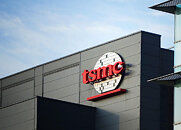Global Notebook Shipments Forecast at Only 176 Million Units in 2023, Says TrendForce
According to TrendForce, global notebook shipments in 4Q22 are likely to decline to 42.9 million units, down 7.2% QoQ and 32.3% YoY, lower than the same period before the pandemic. In addition, market demand is affected by negative factors such as inventory, the Russian-Ukrainian war, and rising inflation, leading to a downward revision of notebook market shipments in 2022 to 189 million units, a 23% decline YoY, with the proportion of shipments in the first and second half of the year at 53:47, the first top-heavy scenario in the past ten years.
According to research, the structural imbalance between notebook market supply and demand remains unresolved at present, leading this year's notebook shipments to present a downward movement trend quarter by quarter. TrendForce believes, after current inventory pressure gradually returns to a healthy level, Chromebooks may be the first wave of products that will see a recovery in demand by 2Q23 and traditional cyclical growth momentum is expected to return to the market, with shipments set to rebound slightly from 14.44 million in 2022 to 16.2 million units.
According to research, the structural imbalance between notebook market supply and demand remains unresolved at present, leading this year's notebook shipments to present a downward movement trend quarter by quarter. TrendForce believes, after current inventory pressure gradually returns to a healthy level, Chromebooks may be the first wave of products that will see a recovery in demand by 2Q23 and traditional cyclical growth momentum is expected to return to the market, with shipments set to rebound slightly from 14.44 million in 2022 to 16.2 million units.





































